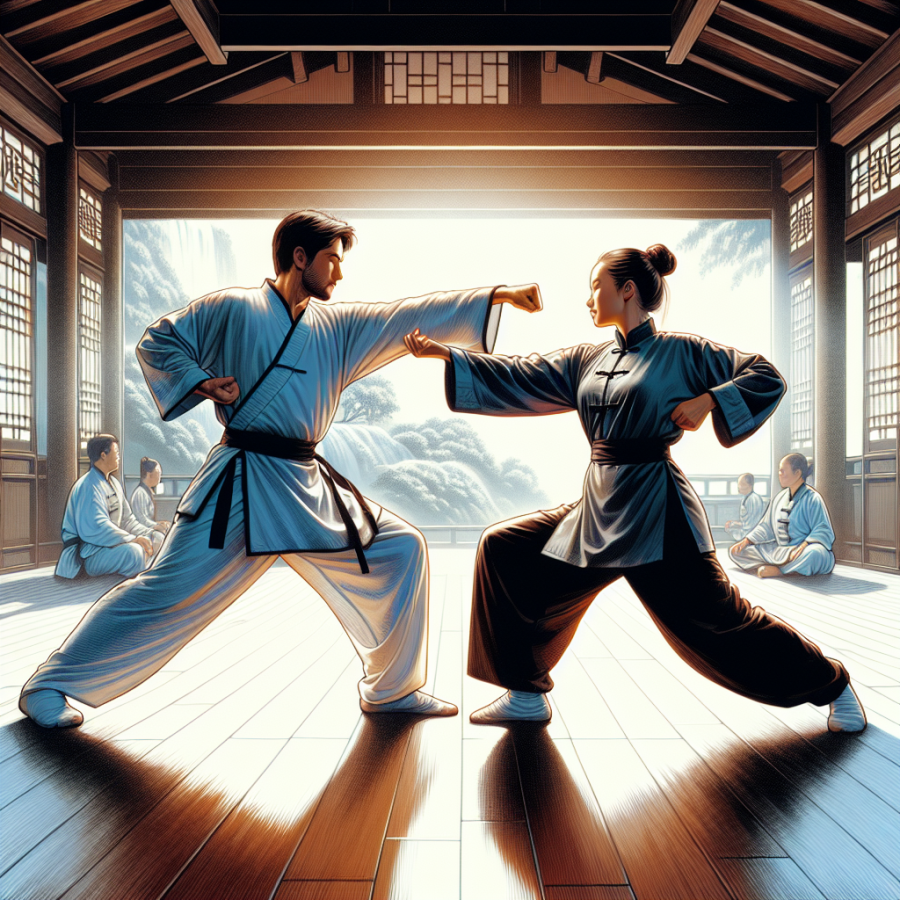From Monastic Rituals to Global Phenomenon: The Evolution of Kung Fu as Martial Art
The earliest traces of Kung Fu date back to 5,000 years, carved into shards of pottery, with monks engaging in disciplined physical exercises. Often termed as mystical and incredible, Kung Fu is derived from the Buddhist faith and finds its root in the fertile plains of ancient India. It found its way into the monasteries of China through Buddhist monks, who moulded it into an art form which has evolved over centuries.
Buddhist monks initially adopted these physical exercises and movements as a means to keep their body in shape to endure the long durations of meditations. It was the Shaolin temple in Henan province of China where a shift was observed: an Indian Buddhist monk named Bodhidharma, introduced exercises to the native monks that supposedly led to the birth of Kung Fu. Under his guidance, these exercises transformed into a more organized form with a codified set of postures, kicks, and movements.
It was during the Southern and Northern Dynasties (420-589 AD), that Kung Fu truly began to formalize. The monks at Shaolin temple developed an early systematized form of martial art that combined Indian exercises, traditional Chinese fighting techniques and the philosophical teachings of Taoism, Confucianism and Buddhism. The style they fostered was a blend of internal and external techniques, a combination of hard and soft methods, thus reflecting the dualistic philosophy of Yin and Yang.
After the fall of the Ming dynasty in the 17th Century, the Qin rulers imposed severe restrictions on the practice of martial arts. This led to Kung Fu going underground, as secret societies were formed to carry on its practice and teaching. It is during this period that many different styles evolved as practitioners adapted their techniques to suit their local environments, cultures, and personal skills.
In the 20th century, Kung Fu witnessed its most noteworthy upsurge. It made its foray into popular culture through Chinese opera and was further popularized by great cinematic martial artists like Bruce Lee and Jackie Chan. Movies and television series revolving around Kung Fu, with their gravity-defying acrobatics, have captivated audiences worldwide.
Into the 21st century, Kung Fu has evolved into various forms, from a religious, self-defence discipline to modern sportive forms like Wushu, rapidly growing in popularity around the globe.
Read also:
Thrills on the Water: The Surge of Drag Boat Racing
Tracing the Origins: The Ancient Roots of Kung Fu
Kung Fu, also known as Chinese martial arts, retains a rich historical fabric tracing back thousands of years. Its development, evolution, and adaptation over time are intertwined with the philosophical, spiritual, and socioeconomic factors of different eras in Chinese history. Tracing back its roots, Kung Fu's origins are steeped in antiquity and wrapped in several layers of mythology and documented historical facts.
Historians suggest that the roots of Kung Fu can be traced back to the ancient Chinese civilization around 4000 years ago. The Yellow Emperor, Huangdi, who is known as the initiator of Chinese civilization, also recorded as introducing the earliest forms of martial arts to the nation. Though this version is embedded more in mythology than fact, it's an integral part of the legends contributing to Kung Fu's origin.
Primordial roots of Kung Fu also find mention in the Zhou Dynasty (1122-255 BC) where a form of martial art referred to as 'Xia' was practiced. Forming an integral part of military training, Xia was designed mainly for attack and defense purposes in warfare situations. Furthermore, references to martial arts in Chinese literature, such as "Liji," a collection of rites documented during the Zhou Dynasty, contribute evidence to early forms of Kung Fu like archery, charioteering, and armed combat.
The most significant push in the early development of Kung Fu came from the influence of Indian Buddhism, which reached China around the 5th and 6th centuries AD. With the arrival of Indian Buddhist monk Bodhidharma in the Shaolin monastery, this period saw the integration of martial arts with Buddhist spiritual philosophies. Bodhidharma is often credited with developing the physical training of the monks, merging the martial arts training with the meditation practices.
Bodhidharma's unique training methods incorporated enhancing physical health and strength to obtain spiritual enlightenment, ushering in the philosophical layer to Kung Fu, transforming it to be more than just a physical pursuit. It was in the Shaolin Temple this approach evolved into a systematized form of martial art, contributing to the Shaolin Kung Fu's birth, which is often referred to as the earliest systematically taught Kung Fu.
Furthermore, the Ming Dynasty (1368-1644) period was significant in the development of Kung Fu systems. General Qi Jiguang, a reputed military officer of the era, played a pivotal role in shaping traditional Kung Fu.




